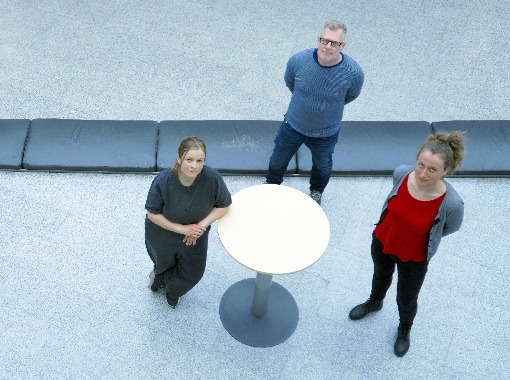Three Presentations on Phd Research in Geography

Askja
N-132 and on Zoom
Laboratory in Geography and Tourism invites you to an open event where three PhD students will present their research in Geography.
The presentations will be held on Wednesday May 19, at 14:00 in Room N-132 in Askja and also streamed on Zoom
Click here for the event on Zoom
Agenda:
14:00-14:30 - Susanne Claudia Möckel
14:30-15:00 - Scott John Riddell
15:00-15:30 - Break
15:30-16:00 - Birna Lárusdóttir
Further Information:
14:00 - 14:30 - Susanne Claudia Möckel
Title: Andic soil properties impact carbon characteristics of peatlands
Abstract: Due to frequent volcanic activity and ongoing erosion of dryland soils induced by land use after the human settlement (c. 870 AD), peatlands in Iceland receive regular additions of mineral aeolian deposits (tephra and eroded material). Their soils (histosols) may develop not only histic, but also andic (volcanic) characteristics. Yet mineral aeolian deposition as an environmental determinant of peatland characteristics in Iceland is still poorly understood, not least with regard to the peatlands´ carbon stores. Here, findings of an ongoing research on the impact of the deposition of eroded soil and tephra on histosols are presented, focusing on the influence of andic soil properties on carbon characteristics. Soil organic matter of histosols with andic properties is less decomposed than in histosols without andic properties. Andic soil properties seem to facilitate the formation of organo-mineral complexes, which particularly hamper the decomposition of chemically more labile carbon groups. Tephra layers appear to have the potential to serve as protective barriers. Hence, andic soil properties, accompanied by the protective role of major tephra deposits, may enable an unusual potential for long-term carbon stabilization in relatively undisturbed peatlands.
14:30 - 15:00 - Scott John Riddell
Title: Monasticism and land use in Medieval Iceland; the palynology of þingeyraklaustur and two tenant farms
Abstract: Until fairly recently, outwith manuscript studies, analyses concerning the impact of monasticism upon the society of Iceland and its environment has been limited (even dismissed). Archaeological studies over the last 20 years have shown that with regard to society, the influence of Icelandic monasteries was significant, mirroring that of Europe in terms of architecture and mission (medical and palliative care). Given that Icelandic monasteries also supported an extensive landholding, especially from the 14th century, it would seem plausible that they also had an impact with regard to land use and environment. Here, utilising palaeoecological methods, it is shown that at Þingeyrarklaustur, the arrival of the monastery in the landscape there in the early 12th century did indeed influence its immediate environs through woodland/scrub clearance and the development of pasture. It would appear however, based upon a further palaeoecological assessment of two tenant farms (Ásbjarnarnes and Helgadalur), that beyond the immediate sphere of the cloister, monasteries had little influence upon the land use practices of their tenants. Furthermore, land use trajectories for these farms were well established long before they were subsumed into the monastic landholding. This may be due to limited opportunity with regard to alternative land use strategies in one instance or a focus upon marine resources negating any need to intensify the exploitation of terrestrially based resources at the other.
15:30 - 16:00 - Birna Lárusdóttir
Title: Place names and landscapes in the making: The history of place name research and the island of Surtsey
Abstract: The main aim of this research is to increase understanding of how place names come to exist, how they reflect and affect our view of the world, and how they can shed light on cultural authority over space and place.
The project has two main parts. Firstly, the history of place-name collection and research in Iceland is analysed, and the ways in which attitudes towards the phenomenon have changed over time with relation to trends in academia and in society. Secondly, a case study focussing on place names was carried out on Surtsey, an island created during a volcanic eruption in 1963. These circumstances provide a unique opportunity to study the formation of place names in a new land, from its very beginning. Research approaches and methodologies are based on phenomenological and philosophical theories regarding the production of place and space, and how humans shape the landscape, i.e., by naming it.
From left: Birna Lárusdóttir, Scott John Riddell and Susanne Claudia Möckel



